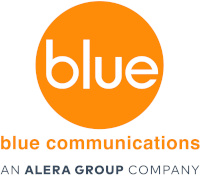Research consistently demonstrates that organizations that have above average diversity at all levels, particularly at the senior leadership levels, are more profitable. And, Glassdoor reported that nearly 60% of employees want their employers to improve diversity in the workplace. Job seekers are even prioritizing diversity during their search process, with 67% of candidates stating that a diverse workforce is an important element when evaluating organizations. It’s a fact: Diversity is key to attracting talent.
In fact, employees that have a safe space to be their true selves are able to bring their best ideas, are more committed to the organization, feel appreciated, experience better mental health and have a higher sense of purpose. Not only does your organization become a kinder place, your organization thrives at all levels from greater innovation, well-being, collaboration, customer service and performance.
Unfortunately, despite the money, time and resources that organizations spend on diversity and inclusion programs, studies indicate that 40% of people still feel isolated at work. Here are a few ways to create a more equitable and inclusive work environment within your organization:
- Diversity, inclusion and belonging starts with leadership. Your organization’s leadership sets the course for an open and safe team environment, allowing all employees to be heard, speak up and feel like they’re a part of the organization’s greater mission. Encourage your leaders to be brave by expressing their vulnerability and blind spots, while also providing them with the tools and resources they need to be successful.
- Build cultural awareness and implement cultural competence training. Cultural competence is the ability to effectively communicate, understand and interact across cultures. Cultural competence is critical to business success within diverse organizations and enables employees to work effectively and positively within cross-cultural teams.
- Be purposeful in fostering allyship among all employees in your workplace. Cultural awareness and competence can be achieved through allyship. Anyone can be an ally, but allyship truly thrives in organizations that create safe spaces where all employees can bring their authentic selves to work. Encourage employees to practice active listening and provide opportunities, workspaces and social events where your employees can get to know and interact with employees from different backgrounds from their own.
- Don’t just talk about it, act on it. One of the biggest mistakes an organization can make when implementing a diversity, inclusion and belonging program is to simply talk about their strategy, with no meaningful action. Create task forces, drive accountability through executive sponsorship, create and activate business resource groups, involve middle managers, design mentorship programs, provide educational tools and resources and encourage attendance in virtual events, town halls, workshops and more.
- Allocate resources to diversity, inclusion and belonging. Diversity, inclusion and belonging programs should not operate in a silo. To create a sense of belonging and increase your bottomline, they must be integrated into the fabric of your organization and a key component of your workplace culture. Involve subject-matter experts across your business to that ensure diversity, inclusion and belonging are integrated into your company policies, programs and processes. Finally, don’t forget to demonstrate that your organization truly prioritizes diversity, inclusion and belonging by allocating an annual budget and designating program owners to your initiatives.
At Blue, we are experts in diversity, inclusion and belonging. We can assess your current cultural competencies, build a workforce plan to align your goals and develop a plan to foster a cultural shift and sustainable change over time. Our team can provide DIB toolkits — including guides to having difficult conversations, FAQs, talking points and manager tips for creating a more equitable and inclusive workplace — and experiential workshops to help you get started.
